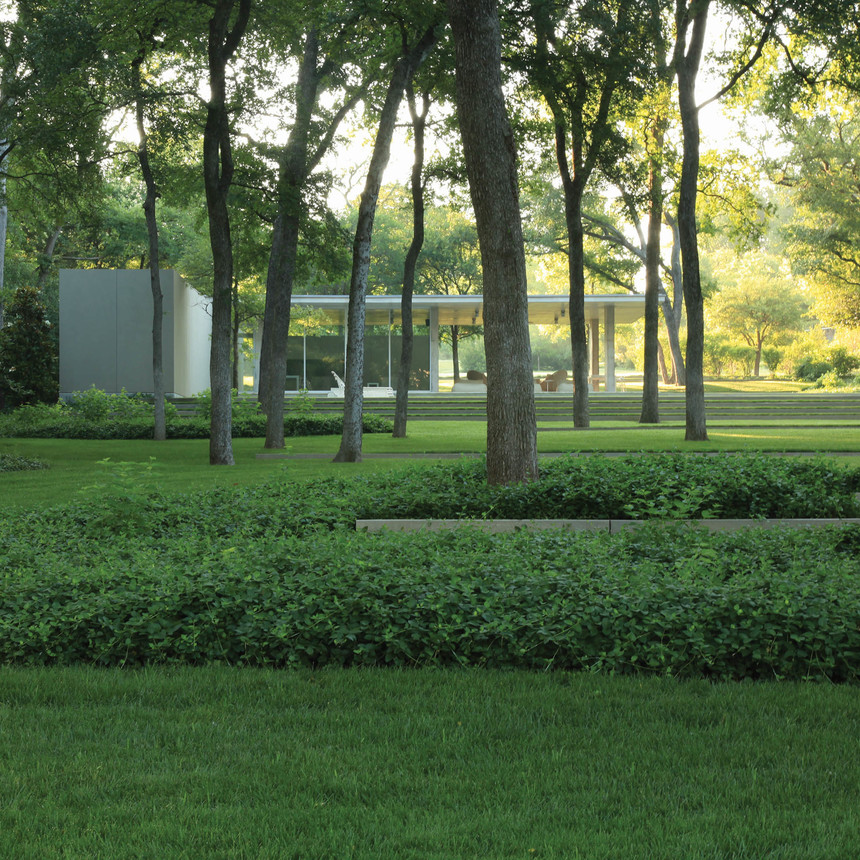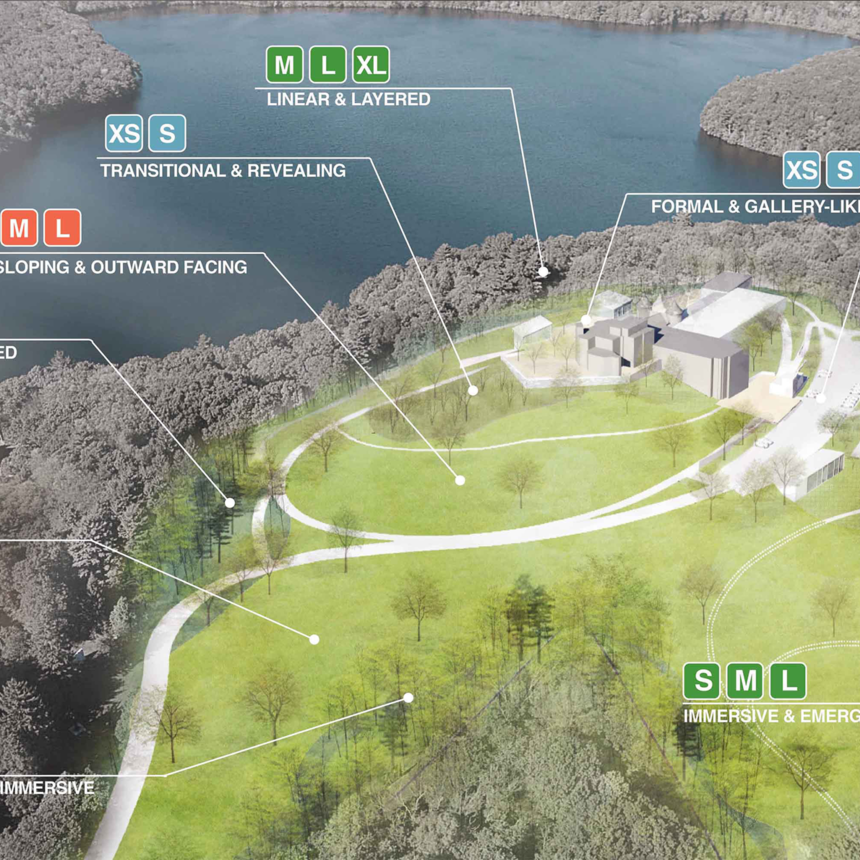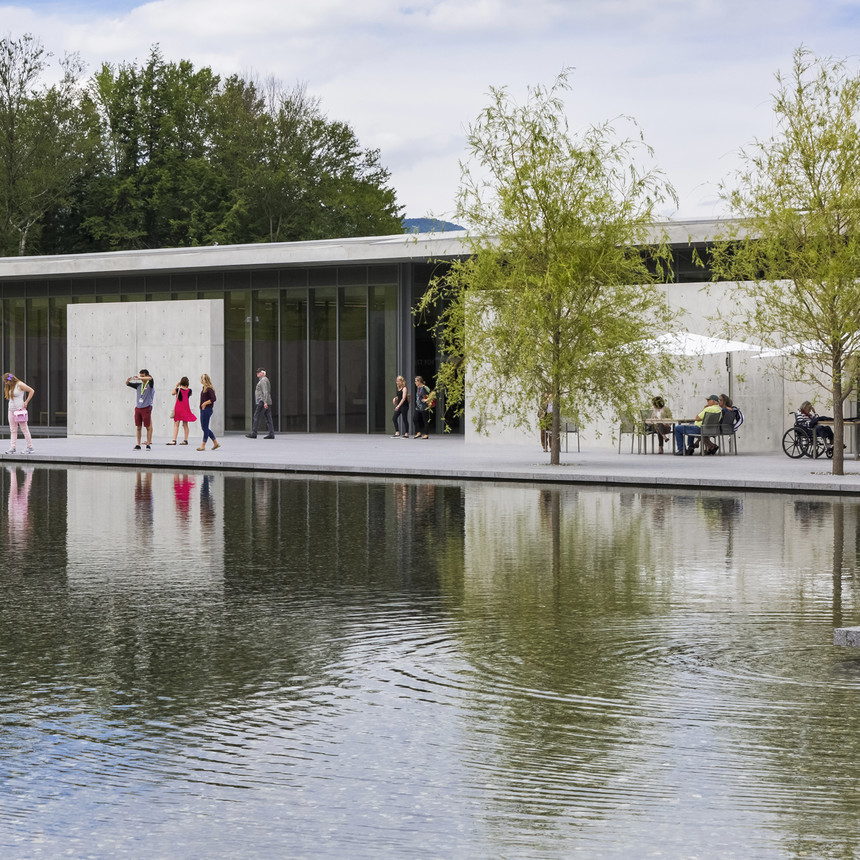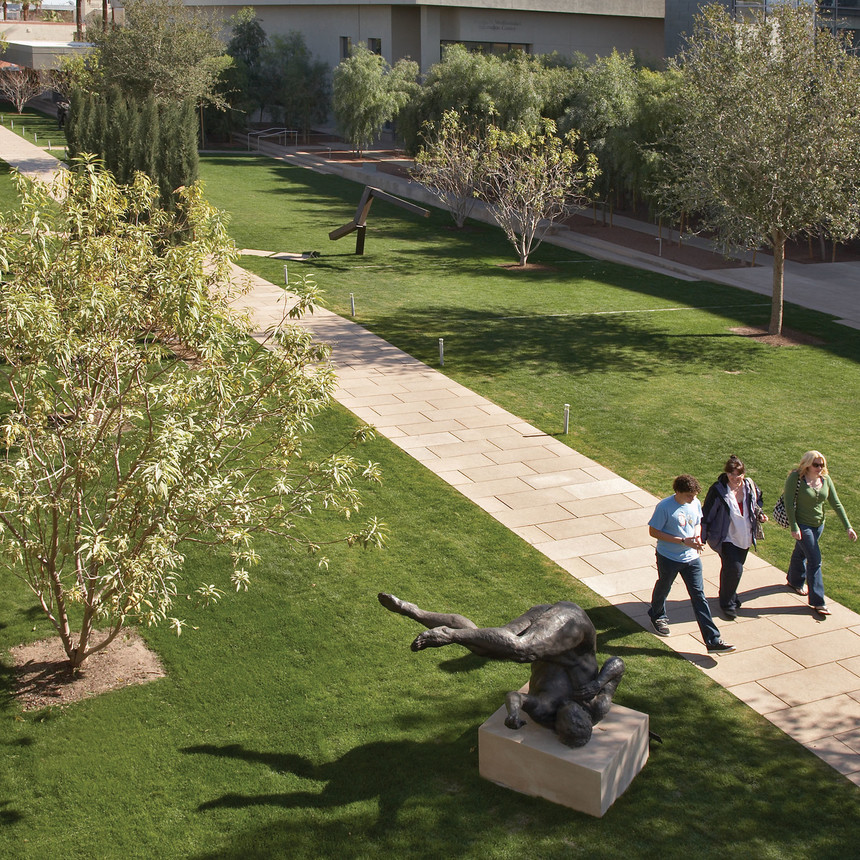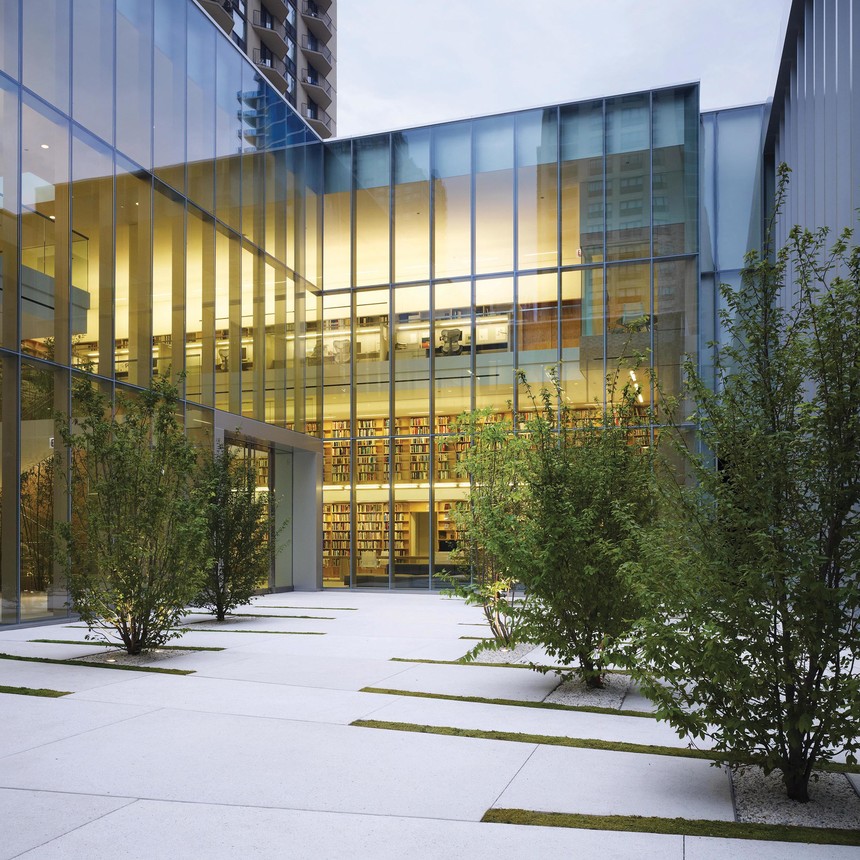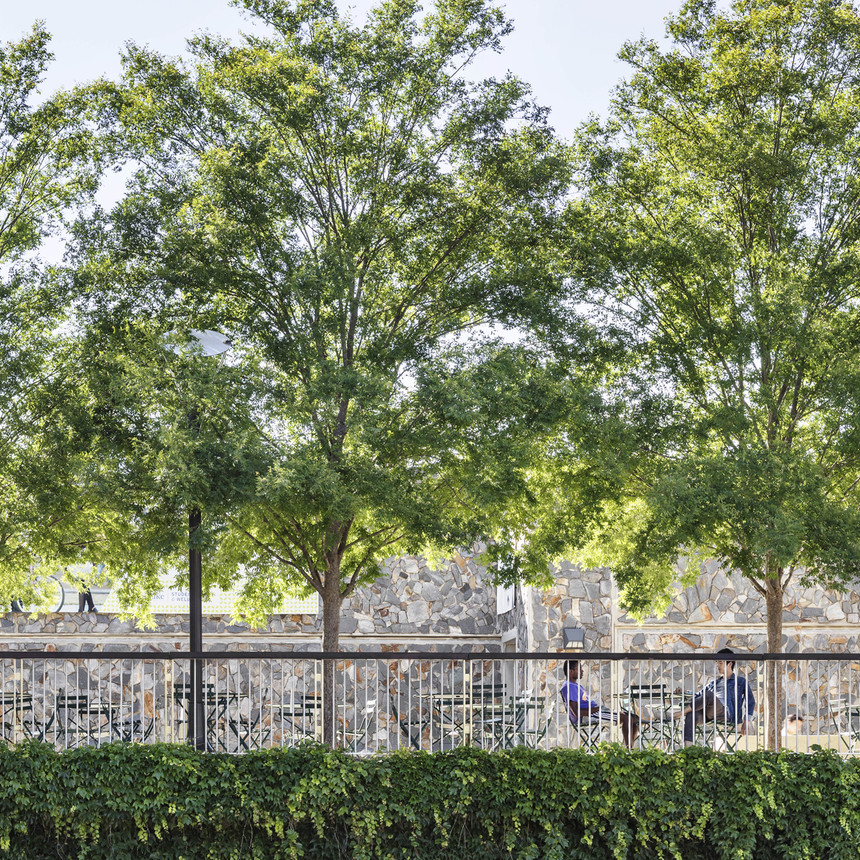Old Quarry
Minimalist sculptor Tony Smith designed this house, in 1953, as part of a unique suburban subdivision set within a former waterfront quarry. During an exacting architectural renovation, we took the site’s own granite—quarry refuse and bedrock—as our primary medium, reordering and manipulating the stone to heighten the experience of the found conditions and to integrate the building volumes with the site’s larger patterns.
Tony Smith set this jewel of a house on steel columns, in an apparent gesture that the rough-hewn quarry—part ruin, part natural system—was to be viewed from above, not occupied. The landscape for the renovated house celebrates the found conditions of the quarry. Through careful stewardship and light-handed reworking of the site stone, the project balances between invisibility and articulation. The judicious reordering of the quarry tailings into a few legible pathways and places gives access to and heightens the experience of the rough remains. As a result, the homeowners have found a domestic retreat where Old Quarry’s essential character has been unearthed, not carpeted.
Where pockets of soil could be made within the rocky formations, new trees were planted as part of a woodland restoration. For each of the trees removed—mostly Norway Maples—a new diverse crop of trees, well-adapted to this environment, have been planted. On the ground plane, years of hand weeding and organic maintenance practices have conquered invasive exotics, allowing a seedbed of scrappy natives to take hold. In areas disturbed by construction, herbaceous and woody plants that remain low to the ground—ferns, bearberry, lowbush blueberry—were selected to emphasize the shape of the ground itself and to preserve an open view corridor through the site. Sandy soils best suited to periodic inundation by tidal flux replaced the previous owner’s garden bed loam. Rainwater harvesting and reverse osmosis provide controlled irrigation to manage the intense swings in soil moisture endemic to this condition.
Our work creates occupiable ground for walking and exploring and a context strong enough to respond to the sculptural clarity of the building
Location
Guilford, CT
Dates
2004-2012
Size
1.5 acres
Leadership
Team
Recognition
- Honor Award for Residential Design, American Society of Landscape Architects
- Honor Award for Residential Design, Boston Society of Landscape Architects
- Suburbia Transformed 2.0 Award, James Rose Center for Landscape Architectural Research and Design
